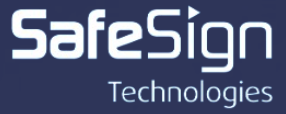Application of RBV Theory and McKinsey 7’S Model on Start-up Company
Abstract
Keywords
Full Text:
PDFReferences
Zainal, V. R., Ramly, H. M., Mutis, Thoby,. Arafah, Willy. (2009). Manajemen Sumber Daya Manusia Untuk Perusahaan. Depok. PT Rajagrafindo Persada.
Widodo, Suparno Eko. (2015). Manajemen Pengembangan Sumber Daya Manusia. Yogyakarta. Pustaka Pelajar.
Resource-based view https://globalmanagement.wordpress.com/
/12/14/tentang-resource-based-view-of-the-firm/[Accessed on 27 juli 2017]
Mulyono,Fransisca. Firm Capability dalam teori resources based view.Jurnal administrasi bisnis (2013), vol 9, no 2 hal 128-143 (ISSN:0216-1249).
VRIO framework https://www.slideshare.net/sarthakrohatgi/
vedanta-cairn-deal. [Accessed on 6 Agustus 2017]
Rikardo (2011). Resource Based View kaitannya dengan Competitive Advantage dan Kompetisi Persaingan Industri.
Case interview Guide, Management Consulting Club. Harvard Business School, p 13.
Struktur organisasi matrik http://anasdharmawan.blogspot.co.id
/2015/10/bentuk-bagan-struktur-organisasi.html [Accessed on 4 Februari 2017]
Thoyib, Armanu (2005). Hubungan Kepemimpinan, Budaya, Strategi dan Kinerja: Pendekatan Konsep. p65
AD Alifadi (2013) Identikasi hambatan implementasi strategi melalui model 7S Mckinsey di PT Awam bersaudara
Refbacks
- There are currently no refbacks.

This work is licensed under a Creative Commons Attribution 3.0 License.
e-ISSN No: 2356-2536 p-ISSN No: 2528-6854 Supported by :
 Jurnal Online
Management Jurnal Elektronik
Jurnal Online
Management Jurnal Elektronik
 Pusat Dokumentasi dan Informasi Ilmiah
Lembaga Ilmu Pengetahuan Indonesia
Pusat Dokumentasi dan Informasi Ilmiah
Lembaga Ilmu Pengetahuan Indonesia






